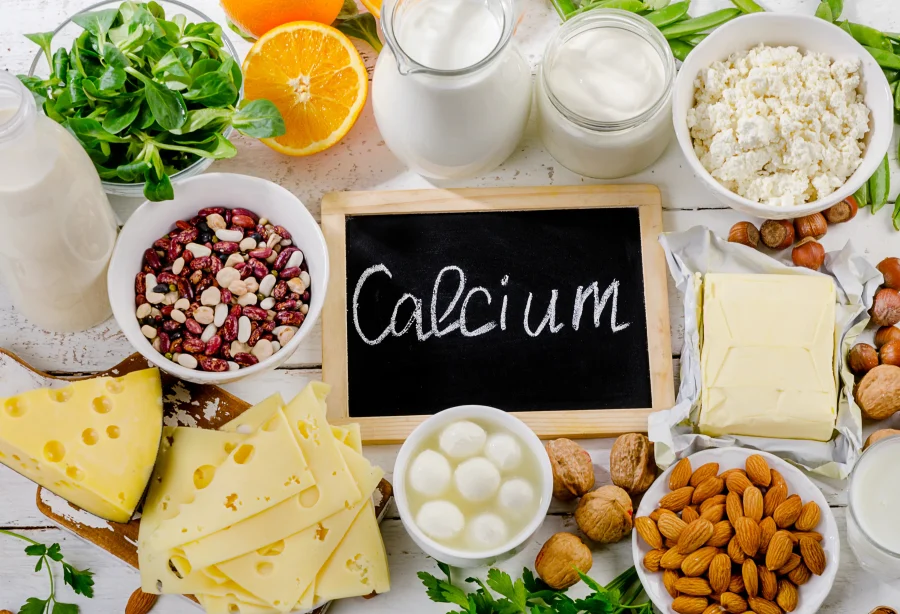The health and strength of our bones rely on a balanced diet and a steady stream of nutrients — most importantly, calcium and Vitamin D. Calcium is a mineral that people need to build and maintain strong bones and teeth. It is also very important for other physical functions, such as muscle control and blood circulation.
Calcium is not made in the body — it must be absorbed from the foods we eat. To effectively absorb calcium from food, our bodies need Vitamin D.
If we do not have enough calcium in our diets to keep our bodies functioning, calcium is removed from where it is stored in our bones. Over time, this causes our bones to grow weaker and may lead to osteoporosis, a disorder in which bones become very fragile.
Postmenopausal women are most vulnerable to osteoporosis. Although loss of estrogen is the primary reason for this, poor lifelong calcium and Vitamin D intake, as well as lack of exercise, play a role in the development of osteoporosis. Note that men also are at risk for osteoporosis — typically later in life than women — and it is important for them to keep track of calcium intakes, as well. Calcium needs vary with age. The Food and Nutrition Board (FNB) of the Institute of Medicine of the National Academies provides guidelines on the amount of calcium needed each day. People can get the recommended daily amount of calcium by eating a healthy diet that includes a variety of calcium-rich foods. Milk, yogurt, cheese, and other dairy products are the biggest food sources of calcium. Other high-calcium foods. Some foods make it harder for the body to absorb calcium. In particular, you should avoid sodas and carbonated beverages, not just for bone health but for many nutritional reasons, including preventing obesity. Sodas decrease calcium absorption in the intestines and contain empty calories. Milk, calcium-fortified juices, and water are better beverage alternatives for all age groups. Although adequate calcium can be obtained through your diet, it is difficult for many people, particularly for those who avoid dairy products. People who are lactose-intolerant or vegans, who do not eat dairy products, have a harder time getting enough calcium from foods.
It is also hard to get enough calcium from the diet during certain times of our lives, such as in adolescence when our bodies require more calcium to build strong bones for life. Postmenopausal women and men older than age 70 also require more calcium to slow down bone loss.
Doctors recommend calcium supplements to those who do not get enough calcium from the foods they eat. Although calcium is sometimes found in multivitamins, it is typically not in significant amounts. Many people need to take separate calcium supplements to ensure they reach the Recommended Dietary Allowance for their life stage.
Not all the calcium consumed — whether through food or supplement — is actually absorbed in the intestines. Research shows that calcium is absorbed most efficiently when it is taken in doses less than 500 mg. Because many calcium supplements come in 500 mg doses, people who require 1,000 mg of supplementation each day should take their doses at separate times. Newer daily slow release formulations of calcium citrate that supply 1,200 mg have recently become available.










